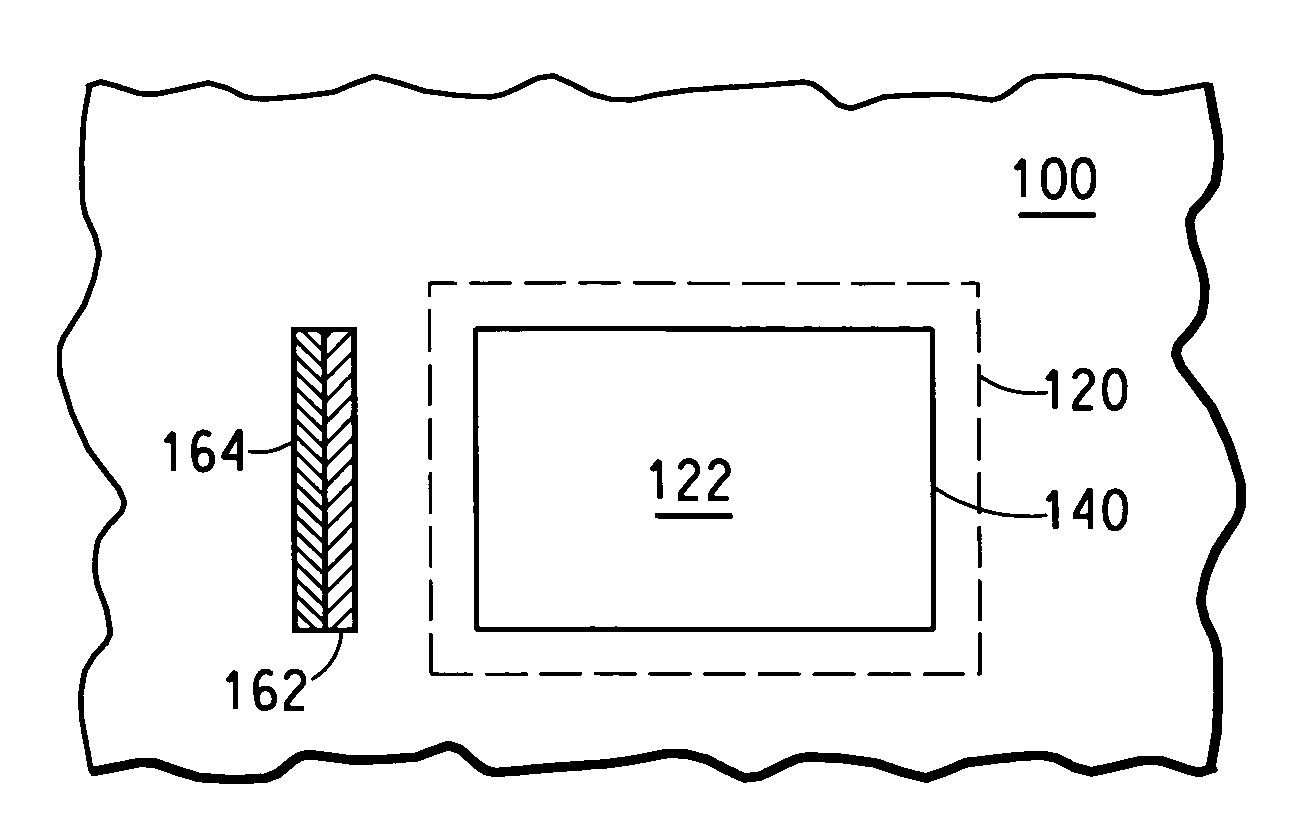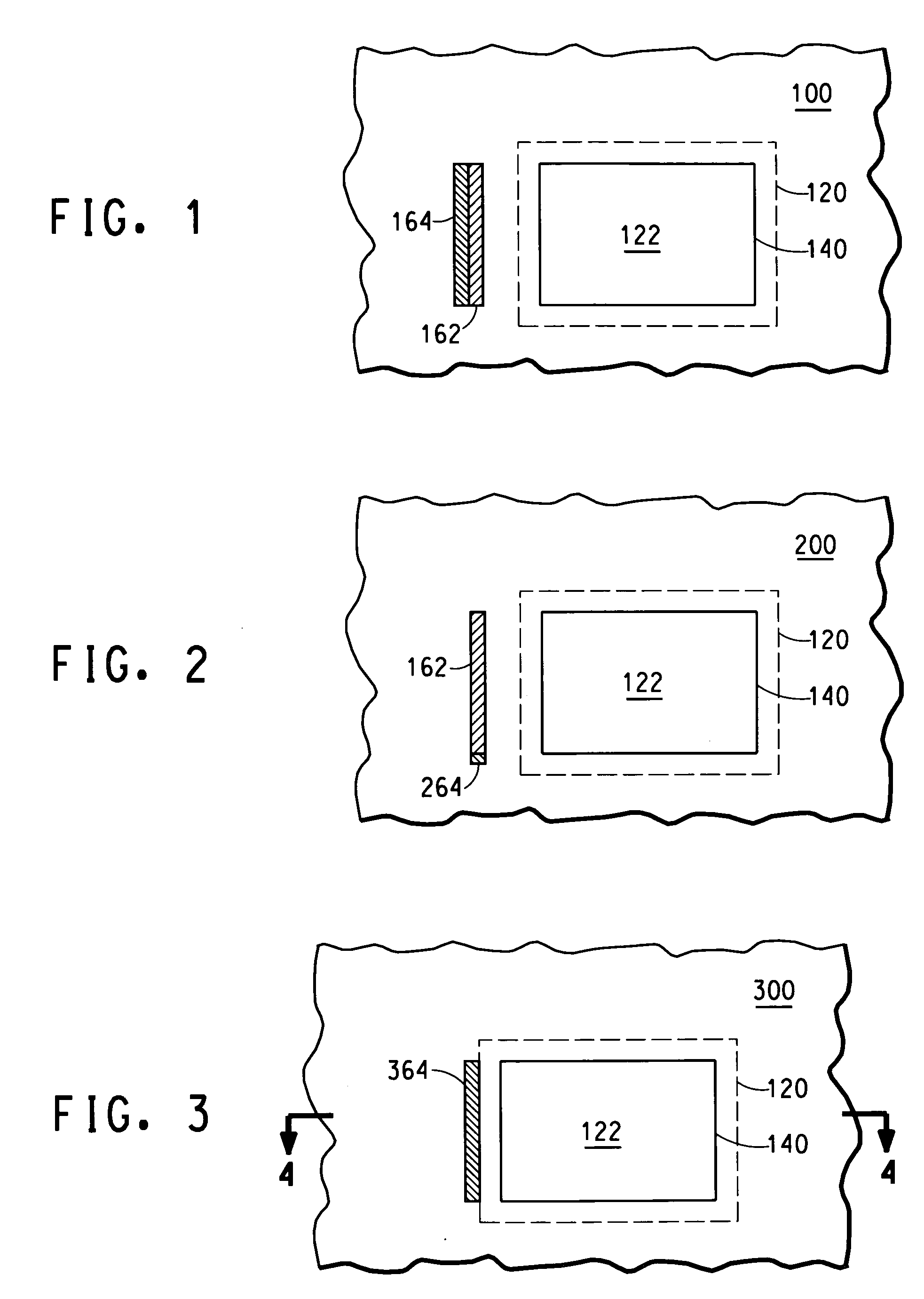Electronic device and method of using the same
- Summary
- Abstract
- Description
- Claims
- Application Information
AI Technical Summary
Benefits of technology
Problems solved by technology
Method used
Image
Examples
example 1
[0134] Example 1 illustrates that the compensation devices and methods can be used to achieve more constant emission intensity during the lifetime of radiation-emitting electronic components. Two OLEDs comprising polymer active layers are fabricated using conventional procedures. Glass / ITO is used as substrate and transparent anode. A thin layer of polyaniline or poly(3,4-ethylendioxythiophene) (“PEDOT”) is deposited over the glass / ITO. A polyfluorene-based organic active layer is then deposited over the thin layer of polyaniline or PEDOT. A thin layer of metal Ba / Al is vacuum deposited over top of polyfluorene organic layer and serves as a cathode. The color of radiation emitted from the electronic devices depends on the opto-electronic properties of the material(s) within the organic active layer. One electronic device is operated using a conventional driving scheme, i.e. constant current at approximately 7 mA. The other electronic device is operated using a compensation driving s...
example 2
[0135] Example 2 demonstrates that the methods disclosed herein do not only compensate the electronic component aging, but also compensate the maximum intensity variation caused by other sources, such as from aging of electronic components within pixel driver circuits. Example 2 also illustrates that the configuration as illustrated in FIG. 8 can be used to measure radiation intensity for a 10×10 matrix OLED display. In one embodiment, the matrix is an active matrix, and in another embodiment, the matrix is a passive matrix.
[0136]FIG. 15 includes a circuit diagram of an electronic device 1500 that includes a power transistor 1502, a capacitive electronic component 1504, a switch 1506, and an organic electronic component 1508. The organic electronic component 1508 may be a radiation-emitting electronic component, a radiation-sensing electronic component, or the like. In one embodiment, the electronic device 1500 includes an array of the circuits as illustrated in FIG. 15. Each of th...
example 3
[0149] Example 3 demonstrates that the compensation scheme and apparatus disclosed in FIGS. 1 and 2 are practical for AMOLED displays and provide stable maximum emission intensity. The electronic device in this example includes a 4″ (nominal) AMOLED user display with a QVGA format (320×RGB×240 pixels). The electronic device also includes 10×RGB columns on each side of the display as dummy displays. The dummy displays are operated with the same data signal as the center portion of the user display. The maximum emission intensity of the dummy displays are measured during predetermined periods, and the variation is used to adjust the emission intensity of both the dummy and user displays. Stable maximum emission intensities can be achieved in both dummy and user displays.
PUM
 Login to View More
Login to View More Abstract
Description
Claims
Application Information
 Login to View More
Login to View More - R&D
- Intellectual Property
- Life Sciences
- Materials
- Tech Scout
- Unparalleled Data Quality
- Higher Quality Content
- 60% Fewer Hallucinations
Browse by: Latest US Patents, China's latest patents, Technical Efficacy Thesaurus, Application Domain, Technology Topic, Popular Technical Reports.
© 2025 PatSnap. All rights reserved.Legal|Privacy policy|Modern Slavery Act Transparency Statement|Sitemap|About US| Contact US: help@patsnap.com



